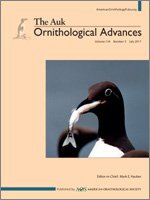The avian vocal organ, the syrinx, is located at the base of the trachea and is controlled by 4 intrinsic pairs of muscles, ventral and dorsal tracheobronchial and ventral and dorsal syringeal muscles. These muscles facilitate active regulation of airflow and sound features, and show exceptionally fast contraction kinetics, stemming from superfast and fast oxidative fiber type composition. Here we investigated to what degree fiber type composition varies across songbird species and whether or not singing ability is related to fiber type composition. In all 10 species studied, syringeal muscles are composed of fast and superfast muscle fibers in males and females. Syrinx size and muscle fiber diameter show some dependence on body size. Content of superfast fibers in the syrinx does not appear to be correlated with singing ability, because non-singing females do not consistently show lower superfast fiber content. Instead, the percentage of superfast fibers in syringeal muscles may be connected to the involvement of neuromuscular control in the generation of the acoustic structure and the entire vocal repertoire of a species.
How to translate text using browser tools
14 June 2017
Is sexual dimorphism in singing behavior related to syringeal muscle composition?
Linsey A. Christensen,
Lisa M. Allred,
Franz Goller,
Ron A. Meyers

The Auk
Vol. 134 • No. 3
July 2017
Vol. 134 • No. 3
July 2017
sexual dimorphism
singing behavior
superfast muscle fibers
syrinx
vocalization




